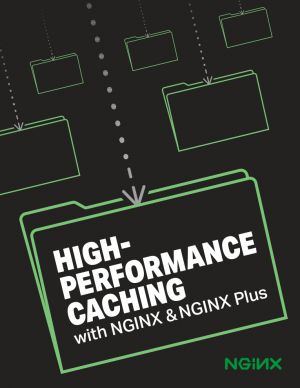Web Page Size, Speed, and Performance
by Terrence Dorsey
DescriptionTable of ContentsDetailsHashtagsReport an issue
Bigger screen real estate, high-density displays, ads, and automatically playing video add to the bloat, but tools and techniques that enable web developers to build complex sites quickly and easily are also part of the problem. Dorsey shows you how to measure site speed, assess page components, and optimize code to help reduce abandonment rates and make your site successful.
Measure your site's request latency and load time on various devices; Learn how long it takes before a user is able to interact with a page; Focus optimization on the your site's most revenue-related aspects; Reduce the number of components it takes to render your page; Slim down your HTML, and combine and minify your CSS files; Determine whether (and which) scripts are blocking page rendering or interaction; Optimize images for size and quality - and learn to use them judiciously; Focus on the mobile experience first, then bring optimizations to the desktop. 






Book Description
Consumers prefer fast, no-nonsense web experiences, yet reports show that the top 2,000 retail websites have grown increasingly bigger and slower over the past three years. In this O'Reilly report, content strategist Terrence Dorsey examines why web pages have become so fat, and offers guidelines to help your company reverse the trend.Bigger screen real estate, high-density displays, ads, and automatically playing video add to the bloat, but tools and techniques that enable web developers to build complex sites quickly and easily are also part of the problem. Dorsey shows you how to measure site speed, assess page components, and optimize code to help reduce abandonment rates and make your site successful.
Measure your site's request latency and load time on various devices; Learn how long it takes before a user is able to interact with a page; Focus optimization on the your site's most revenue-related aspects; Reduce the number of components it takes to render your page; Slim down your HTML, and combine and minify your CSS files; Determine whether (and which) scripts are blocking page rendering or interaction; Optimize images for size and quality - and learn to use them judiciously; Focus on the mobile experience first, then bring optimizations to the desktop.
This open book is licensed under a Creative Commons License (CC BY). You can download Web Page Size, Speed, and Performance ebook for free in PDF format (2.8 MB).
Table of Contents
Introduction
Big Web Pages are a Bigger Problem Than You Think
What Makes Web Pages Fat?
The Solution Starts with Understanding the Problem
Cut and Paste Development
Simplify, Then Add Lightness
Site Optimization From the Top Down
Is an Image Worth 1,000 Bytes?
Mobile Doesn't Mean Speedy
Next Steps
Book Details
Title
Web Page Size, Speed, and Performance
Subject
Computer Science
Publisher
O'Reilly Media
Published
2015
Pages
39
Edition
2
Language
English
ISBN13 Digital
9781491950227
ISBN10 Digital
1491950226
PDF Size
2.8 MB
License

Related Books

You can cache static assets - more than half the payload needed to respond to many web requests - and even application‑generated web pages (whether partial or complete). And you can use cache clusters and microcaching to increase the caching capability of your web applications while simplifying implementation and reducing operational complexity.
...

Actors and the Art of Performance: Under Exposure combines the author's two main biographical paths: her professional commitment to the fields of both theatre and philosophy. The art of acting on stage is analysed here not only from the theoretical perspective of a spectator, but also from the perspective of the actor. The author draws on her ...

If you are interested in learning how to build and design websites, Hyper Text Markup Language (HTML) is a great place to start. This project-based tutorial series will introduce you to HTML and its methods by building a personal website using our demonstration site (below) as a model. Once you learn the basics, you will know how change the website...

This book is written by world-recognized experts in the fields of applied superconductivity and superconducting accelerator magnet technologies. It provides a contemporary review and assessment of the experience in research and development of high-field accelerator dipole magnets based on Nb3Sn superconductor over the past five decades. The reader ...

This book investigates the effects of changes in leadership and managerial structures of Nordic universities resulting from reforms in the last decade. It builds on a rich, comparative dataset across a multiplicity of system-wide (macro) and organisational (meso and micro) dimensions, namely: reform or policy initiatives; drivers, aims, instruments...

Application Programming Interfaces (APIs) are seemingly everywhere. Thanks to the popularity of web-based products, cloud-based X-as-a-service offerings, and IoT, it is becoming increasingly important for engineers to understand all aspects of APIs, from design, to building, to operation.
Research shows that there is increasing demand for near r...

